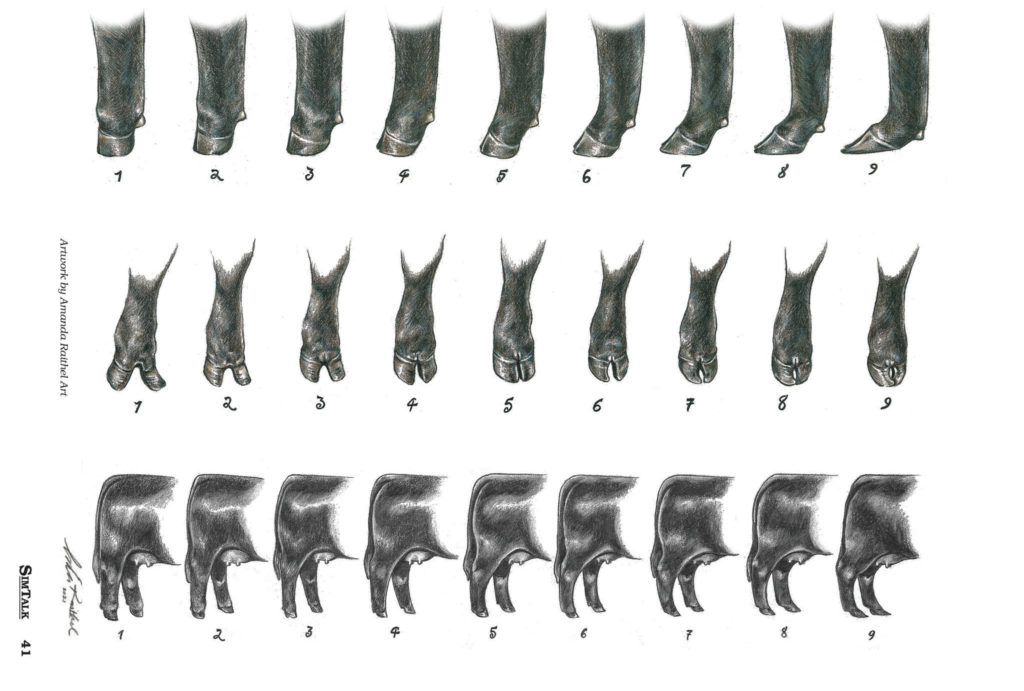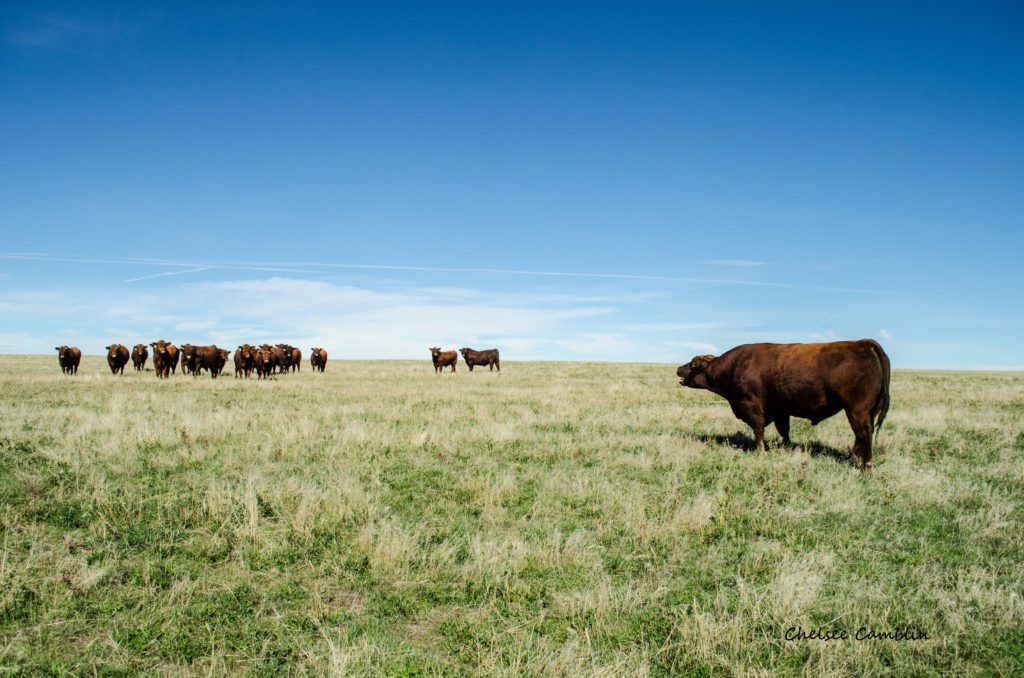Soundness by itself is a complex trait controlled by many skeletal and environmental factors. Fortunately, we know soundness traits such as the curvature of claws, the angle of the hoof, or even the angularity of the hock and skeleton can be improved through genetic selection and appropriate culling practices. The heritability of these traits range from 0.10 to 0.40, meaning approximately 10% to 40% of the variation for soundness traits in our cattle populations can be directly associated with genetics.
Seedstock producers have the responsibility of not only improving the functionality and performance of beef production on a global scale but also improving the profitability of our commercial customers. Given feet and leg soundness issues can present themselves early in an animal’s lifetime, commercial cattlemen can experience major financial losses if whole sire groups of replacement females go lame, or the new bull they bought this spring breaks down while breeding cows. The duty of seedstock producers is to not only remove bad-footed animals from their annual offerings but to also select for genetic improvement in this area.
The best and most effective way to accomplish selecting for genetic improvement is through the use of genetic tools such as Expected Progeny Difference (EPD) predictions and economic selection indexes. However, as many know, these tools are only available if an appropriate amount of data on the trait of interest is supplied to the genetic evaluation.
As with any new or novel trait development, the production of these genetic predictions is entirely dependent upon a steady stream of data coming in from you, the membership. Much like docility EPD, feet and leg data collection relies on members to submit their own subjective observations on three traits: hoof angle, claw shape, and rear leg side view (hock angle). These three traits have shown to be lowly genetically correlated with each other, have moderate heritability, and appear to have the strongest relationship of feet and leg indicator traits with longevity.
1. Hoof Angle a description of the angularity that exists between the base of the hoof to the pastern. Can describe steepness, shallowness, and length of toe.
2. Claw Shape a description of the digital confirmation with regard to shape, size, and symmetry. Can describe divergence and openness, or curling/crossing of claws.
3. Rear Leg Side View a description of the angularity that exists in the hock joint in relation to movement. Can describe straightness and rigidness, or overflexion of the hock joint
The American Simmental Association has invested in new and more comprehensive visual rubrics to aid producers in their efforts to classify feet and leg traits in their cow herds. These new rubrics are available in print, as well as on the web, and can be implemented during semi-annual processing to gather data on whole contemporary groups.
A useful way to gather large amounts of feet and leg data is to develop a web-based survey (Google survey works great), and attach the visual rubrics to each question so data can be gathered electronically and with quick access to visual aids.
The most effective and fair assessment should be done when cattle do not have their heads caught in a head-catch, as this leads to uneven weight distribution across all four limbs. Rather, score animals in small groups as they leave the chute, in alleys with an entry gate and separate exit gate to ensure whole contemporary group reporting and accuracy of data collection.
Current feet and leg data counts in Herdbook
● 53 member accounts
● 3,182 distinct animals
● 3,215 claw set
● 3,214 hoof angle
● 2,089 rear leg side view.

Click on the image to enlarge the hi-res image.
Guidelines recommended for feet and leg data collection:
• Score the three traits (Hoof Angle, Claw Shape, and Rear Leg Side View) on a 1 to 9 scale using the above rubrics.
• If there is variation in the conformation of hoof traits between front/rear or left/right, score the worst hoof.
• Scores should be collected on all yearling bulls and heifers up to 18 months of age to capture whole contemporary groups. Reminder: animals that are contemporary by themselves will not have their scores included in the evaluation.
• Scores may be evaluated annually on mature cows (taken in conjunction with mature weights and body condition scores)
• Score all animals prior to any hoof trimming.
• Score animals on a level and hard surface, devoid of mud or grass to ensure an accurate appraisal.
• Score all animals on the same day, from the same evaluator.
Ultimately, feet and leg appraisal and data collection has a range of benefits, including training membership to become more aware of conformational differences and characteristics in the soundness of their cow herd and annual seedstock offering, building a more robust understanding of feet and leg traits as direct indicators of soundness and longevity, and building a data set for EPD development so all can benefit from more precise genetic selection.
SOURCE:








